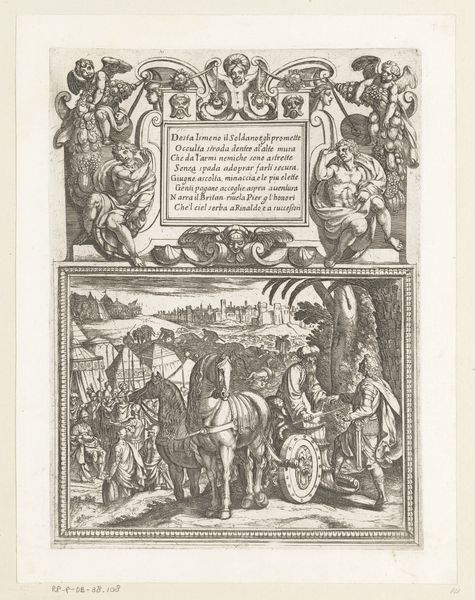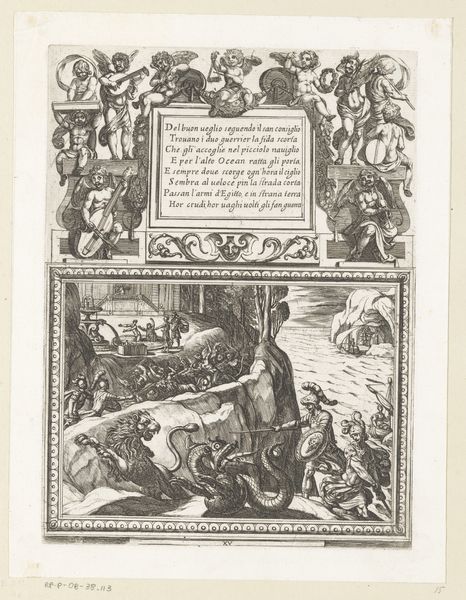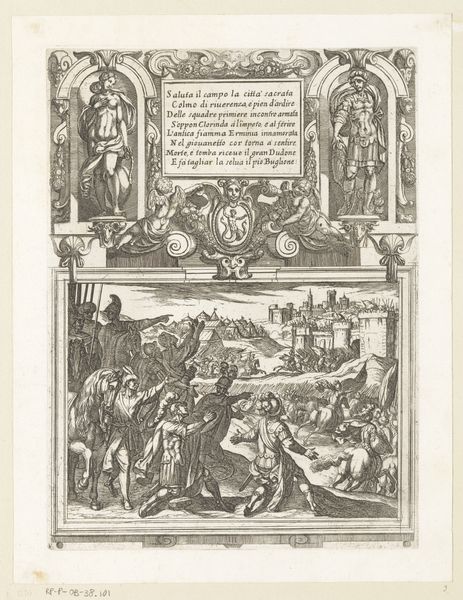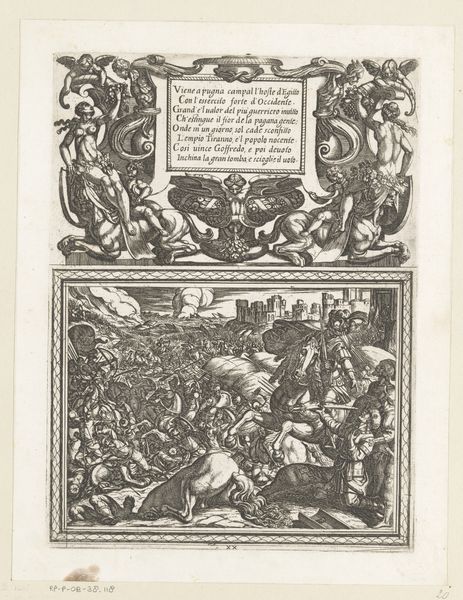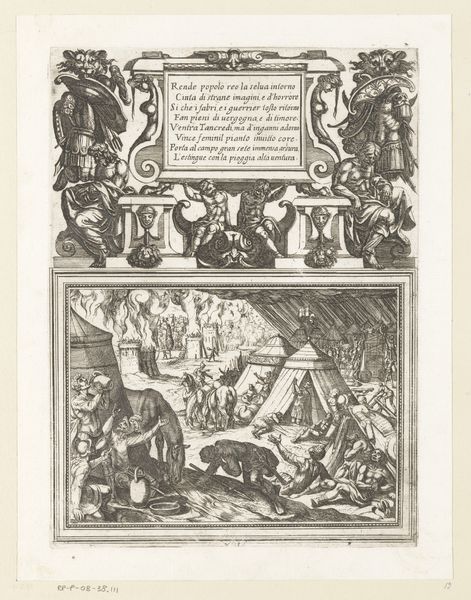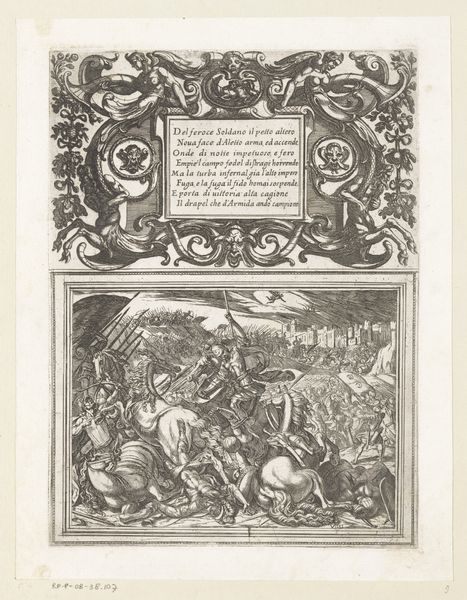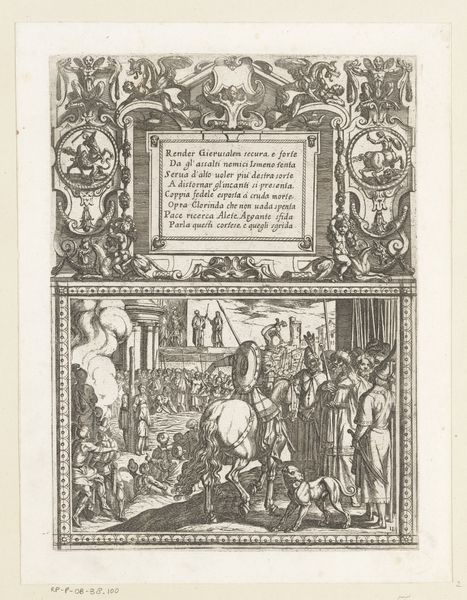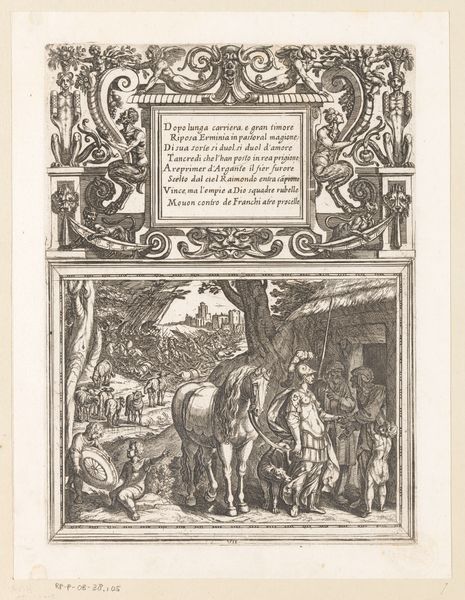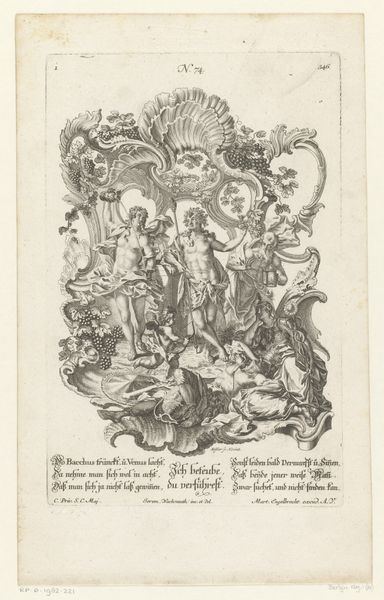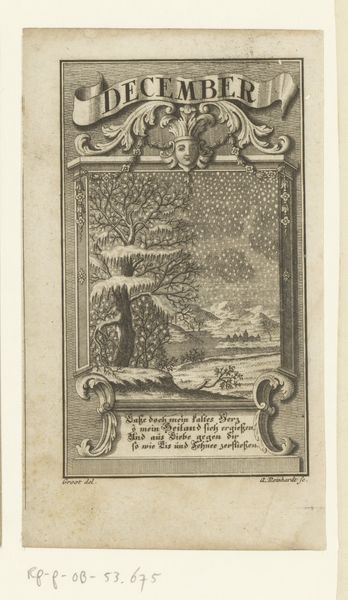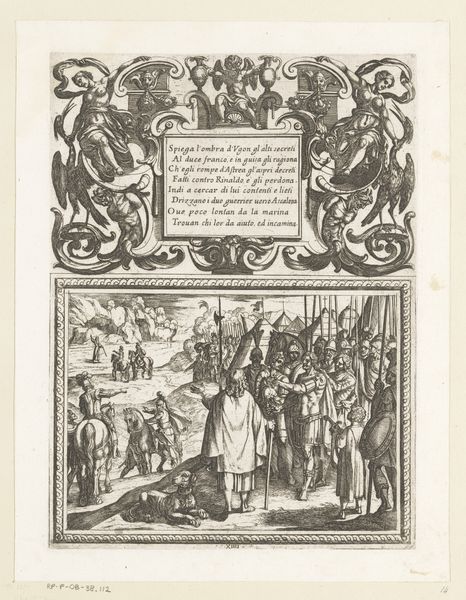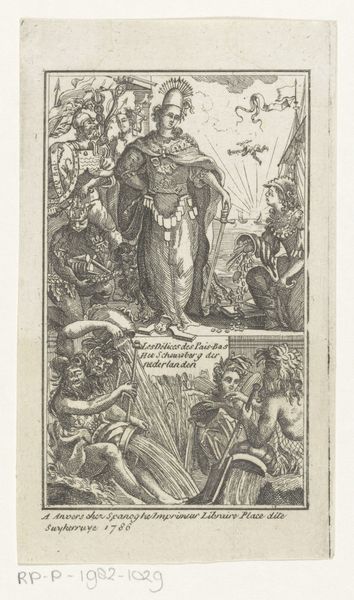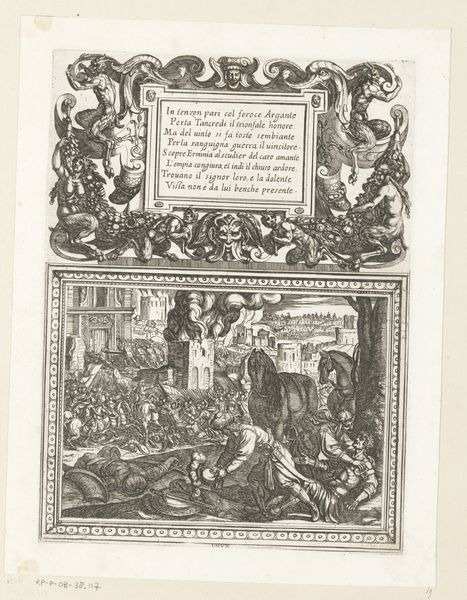
Illustratie bij Canto IV van Tasso's 'Gerusalemme Liberata' 1565 - 1630
0:00
0:00
print, engraving
#
narrative-art
#
pen drawing
# print
#
old engraving style
#
line
#
history-painting
#
italian-renaissance
#
engraving
Dimensions: height 275 mm, width 204 mm
Copyright: Rijks Museum: Open Domain
This illustration for Canto IV of Tasso's "Gerusalemme Liberata" was created by Antonio Tempesta, probably in the late 16th or early 17th century. It's an engraving, meaning that the image was incised into a metal plate, likely copper, and then printed. Look closely, and you can see the characteristic crisp lines and controlled cross-hatching made possible by the engraver's burin. This was a medium perfectly suited to the burgeoning print market of the time. Demand for images was high, and engraving allowed for relatively quick and consistent reproduction, making art accessible to a wider audience. But this wasn't just about efficiency. The very act of meticulously carving the image into metal, line by line, imbued it with a sense of precision and detail. Note the ornamental frame on the upper register and the many figures on the lower one. The high contrast emphasizes the dramatic scene, perfectly capturing the epic scale of Tasso's poem. In its marriage of artistic skill and commercial viability, engraving played a vital role in shaping visual culture.
Comments
No comments
Be the first to comment and join the conversation on the ultimate creative platform.
